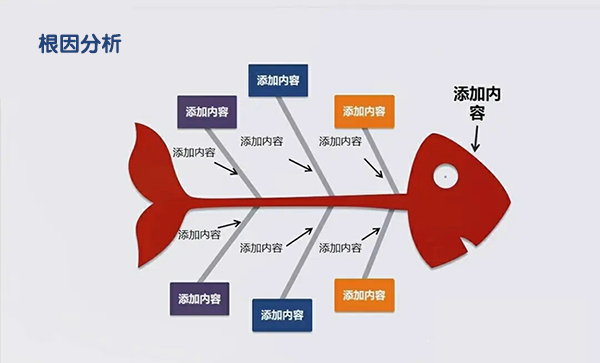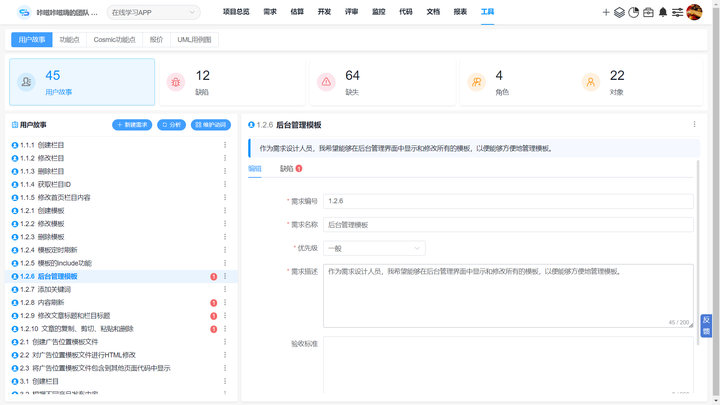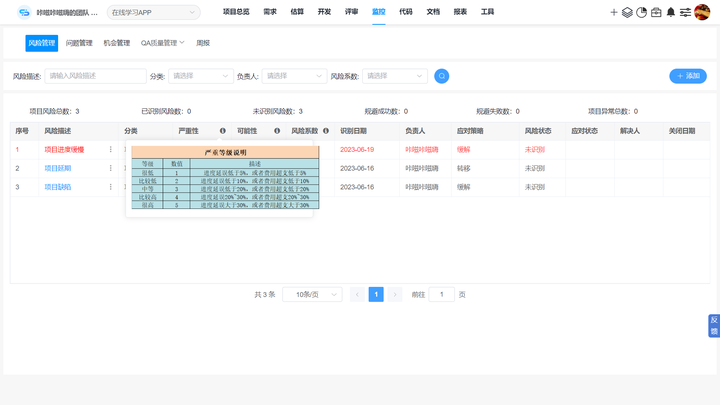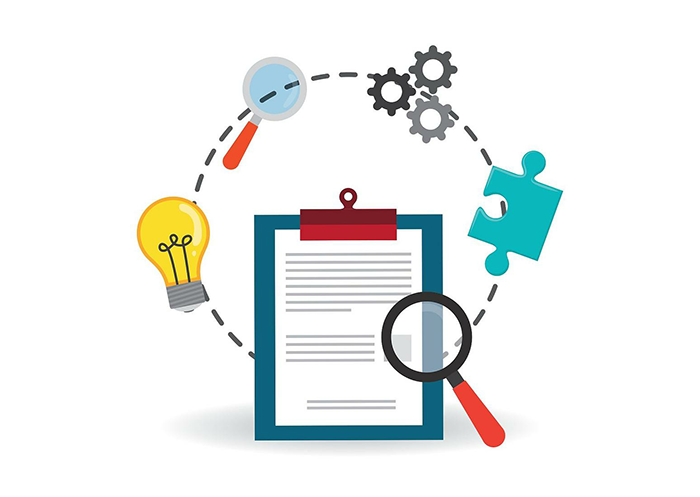Successful projects often attach importance to the prevention and control of project risks, which is conducive to the timely control and resolution of possible risks and minimizes their adverse effects. If we do not pay attention to the prevention and control of risks, and do not discover and deal with project risks in time, then project risks will often bring us unexpected adverse consequences, and we often need to pay a greater price to deal with the risk time.
Therefore, the prevention and control of project risks is imminent. Generally speaking, there are five key points:
1. Early detection and identification of risks
The first step in project risk management is to identify the risks that exist in the project. Therefore, how to detect and identify project risks as early as possible is very critical.
Tools and techniques for identifying risks in general: expert judgment, data collection (brainstorming, checklists, interviews), data analysis, interpersonal and team skills, reminder lists, and meetings. Risk data analysis includes: root cause analysis, assumptions and constraints analysis, SWOT analysis, document analysis.

In order to detect and identify risks as early as possible, we can make full use of development tools and improve efficiency. For example, the requirement analysis tool of CoCode Development Cloud uses AI to quickly analyze user requirement defects, such as ambiguity, duplication, omission, inconsistency, and complexity, within a few minutes through requirement testing and consistency detection, and precisely locks requirement defects. Thus identifying risks as early as possible.

The review analysis tool can evaluate the effect of the review by predicting the number of remaining defects, allowing us to discover all remaining defects as early as possible, which is conducive to early detection, identification and treatment of risks.
2. Risk quantitative modeling analysis and risk level assessment
In order to better deal with risks, it is necessary to analyze the risks, especially the analysis of the whole project. We can run simulations to show how likely the project sponsor is to complete the task within a given time frame, and similar simulations can be done for project costs. A more commonly used tool is to use risk quantitative modeling software, such as PRA, FUSE, @RISK, etc.
On the other hand, it is necessary to conduct matrix level analysis of project risk through the two dimensions of risk severity and risk possibility, and calculate the risk coefficient according to the risk dimensions of different levels.
For example, CoCode Development Cloud uses this method to divide the serious impact of risks on the project into five levels: very low, relatively low, medium, relatively high, and very high. If the schedule is delayed by 20%~30%, or the cost is overrun by 20%~30%, set the level: relatively high. The degree of possibility of risk generation is divided into five levels: very low, relatively low, medium, relatively high, and very high. If the probability of risk occurrence is 0.6~0.8, set it as level: relatively high.

3. Scientific planning of risk strategy and control process
In view of the possible risks in each link of the development process, the project manager, on the basis of project risk analysis and evaluation, formulates a risk assessment and supervision mechanism in line with the characteristics of the project, implements a post responsibility system, and formulates control strategies in advance to minimize development risks .
And in the control of the critical path of the project, an early warning mechanism was established. This is helpful for efficient control and early warning of project progress, thereby reducing the possibility of project delays. For example, the CoCode development cloud automatically calculates the risk factor and prioritizes the risks according to the risk impact level. If the coefficient exceeds 10, the system will automatically mark a red warning to remind us to give priority to processing.

We can prepare preventive strategies and preventive measures in advance for possible risks. Generally speaking, risk response strategies are divided into four types: mitigation, transfer, avoidance and acceptance. We can use different coping strategies to prepare preventive strategies and preventive measures in advance for possible risks.
4. Establish a whole-process risk monitoring mechanism
In order to further deal with the possible impact of risks or opportunities, we need to continuously track the whole process and implement the first responsible person system. It is best to have a to-do reminder function to automatically remind the relevant person in charge in the form of to-do messages and implement it as soon as possible. Responses.

The project needs to establish its own organization-level risk asset library, and constantly update and improve it during the development process. The establishment of the risk asset library is conducive to the scientific analysis of project risks, scientific planning and deployment in advance of many risks that may be encountered in each link of development, and preventive strategies and preventive measures.
The establishment of the CoCode organization-level risk asset library, on the one hand, can efficiently accumulate valuable experience and wealth in the development process of each project; Development quality and development efficiency, improve organizational competitiveness.

5. Establish risk contingency plans
We need to formulate risk contingency plans in advance according to the actual situation. On the basis of risk analysis and assessment, formulate emergency plans based on early warning information, existing risks and hidden dangers, available resources, emergency response capabilities and other factors. In addition, the formulation of emergency plans also needs to comprehensively consider issues such as emergency organization structure communication plans, material reserves and safeguard measures, and establish implementation steps and processes.

At present, CoCode releases a series of AI development tools: Co-Project intelligent project management tool (requirement itemization, automatic generation of test cases), requirement analysis tool, review analysis tool, and story point estimation tool. Among them, the Co-Project project management platform has released 4 major versions, free trial for 30 days; and released a series of CMMI efficient implementation tools to achieve full coverage of the CMMI standard process and fully support the implementation of CMMI3-5 levels.